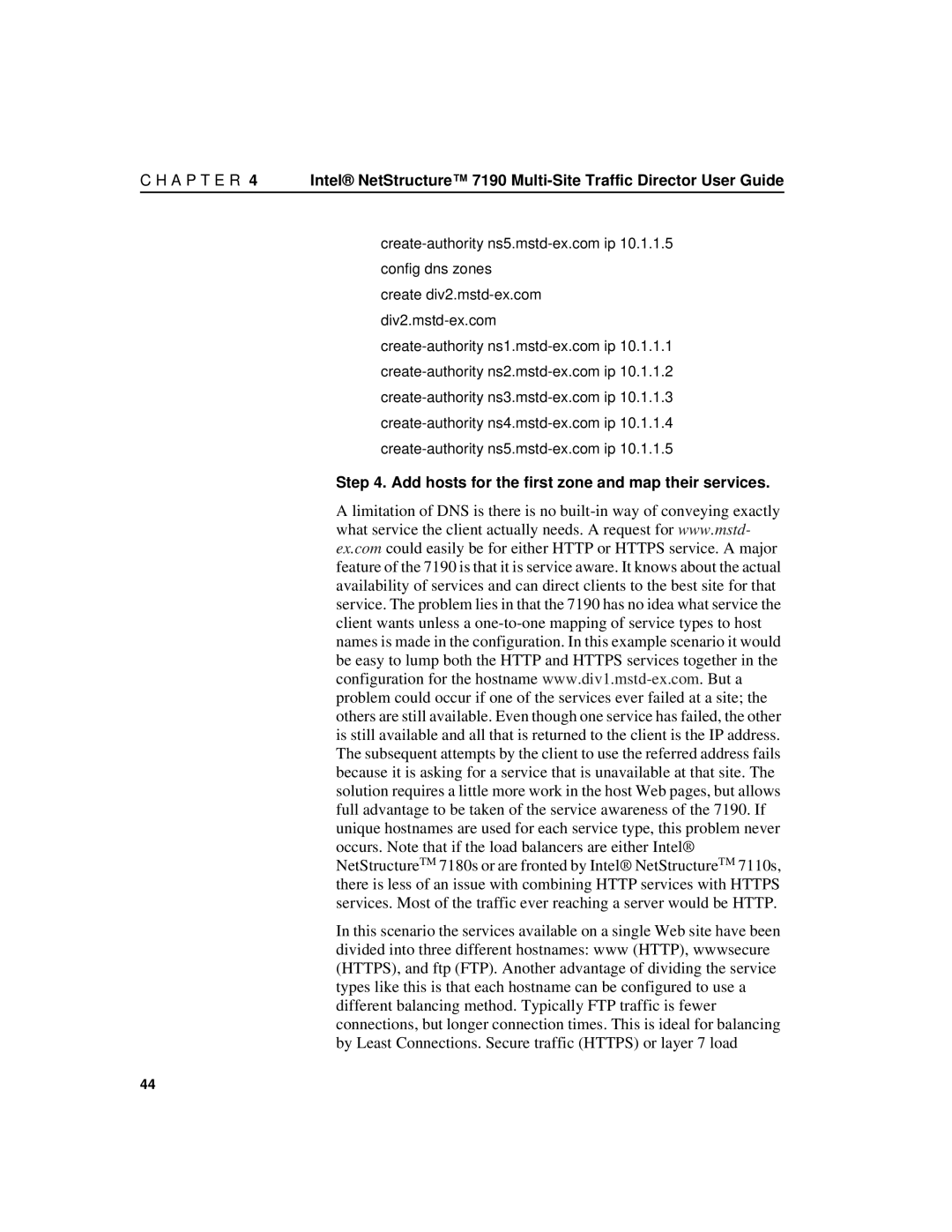C H A P T E R 4 | Intel® NetStructure™ 7190 |
| |
| config dns zones |
| create |
| |
| |
| |
| |
| |
| |
| Step 4. Add hosts for the first zone and map their services. |
| A limitation of DNS is there is no |
| what service the client actually needs. A request for www.mstd- |
| ex.com could easily be for either HTTP or HTTPS service. A major |
| feature of the 7190 is that it is service aware. It knows about the actual |
| availability of services and can direct clients to the best site for that |
| service. The problem lies in that the 7190 has no idea what service the |
| client wants unless a |
| names is made in the configuration. In this example scenario it would |
| be easy to lump both the HTTP and HTTPS services together in the |
| configuration for the hostname |
| problem could occur if one of the services ever failed at a site; the |
| others are still available. Even though one service has failed, the other |
| is still available and all that is returned to the client is the IP address. |
| The subsequent attempts by the client to use the referred address fails |
| because it is asking for a service that is unavailable at that site. The |
| solution requires a little more work in the host Web pages, but allows |
| full advantage to be taken of the service awareness of the 7190. If |
| unique hostnames are used for each service type, this problem never |
| occurs. Note that if the load balancers are either Intel® |
| NetStructureTM 7180s or are fronted by Intel® NetStructureTM 7110s, |
| there is less of an issue with combining HTTP services with HTTPS |
| services. Most of the traffic ever reaching a server would be HTTP. |
| In this scenario the services available on a single Web site have been |
| divided into three different hostnames: www (HTTP), wwwsecure |
| (HTTPS), and ftp (FTP). Another advantage of dividing the service |
| types like this is that each hostname can be configured to use a |
| different balancing method. Typically FTP traffic is fewer |
| connections, but longer connection times. This is ideal for balancing |
| by Least Connections. Secure traffic (HTTPS) or layer 7 load |
44
